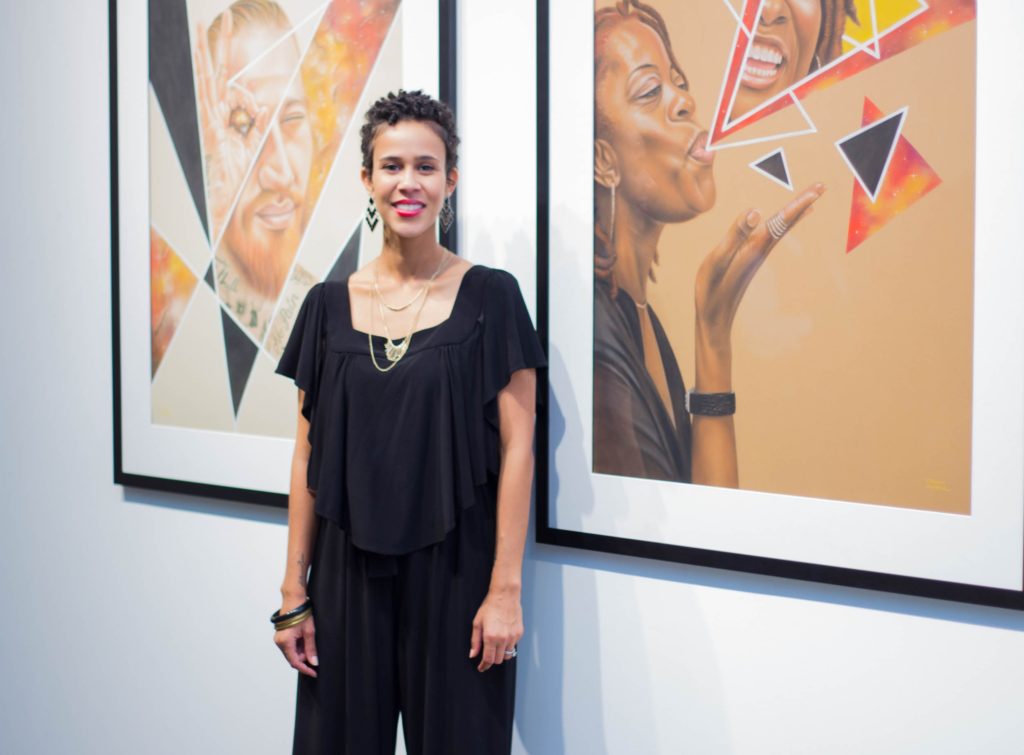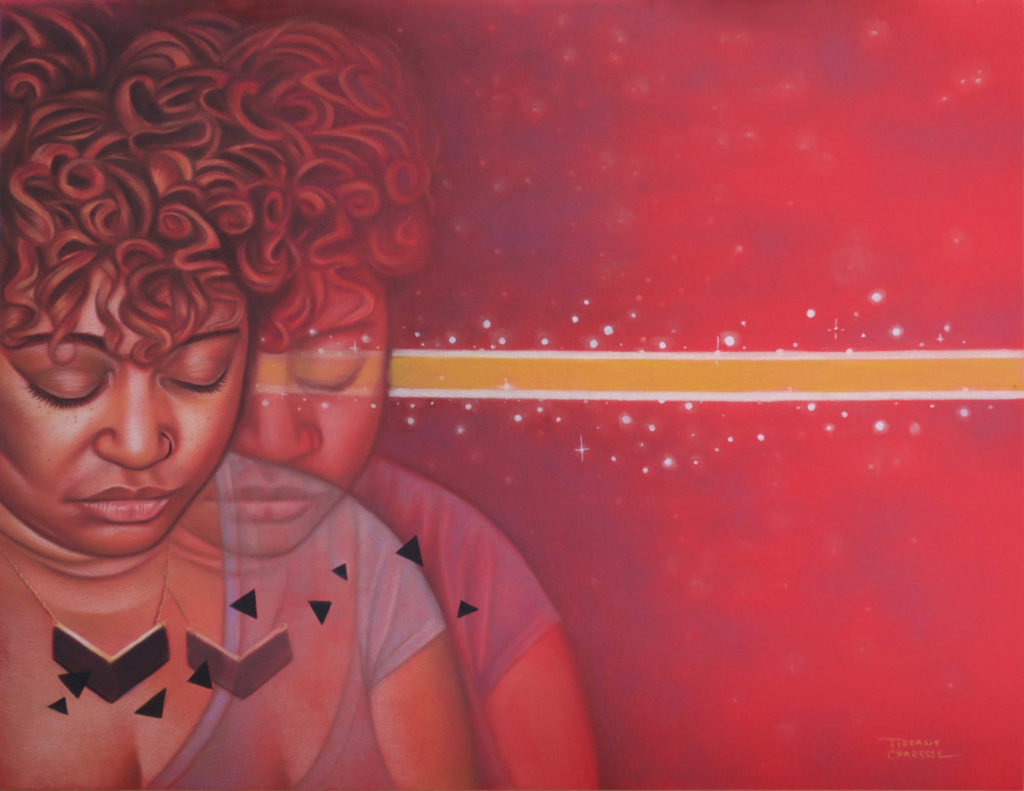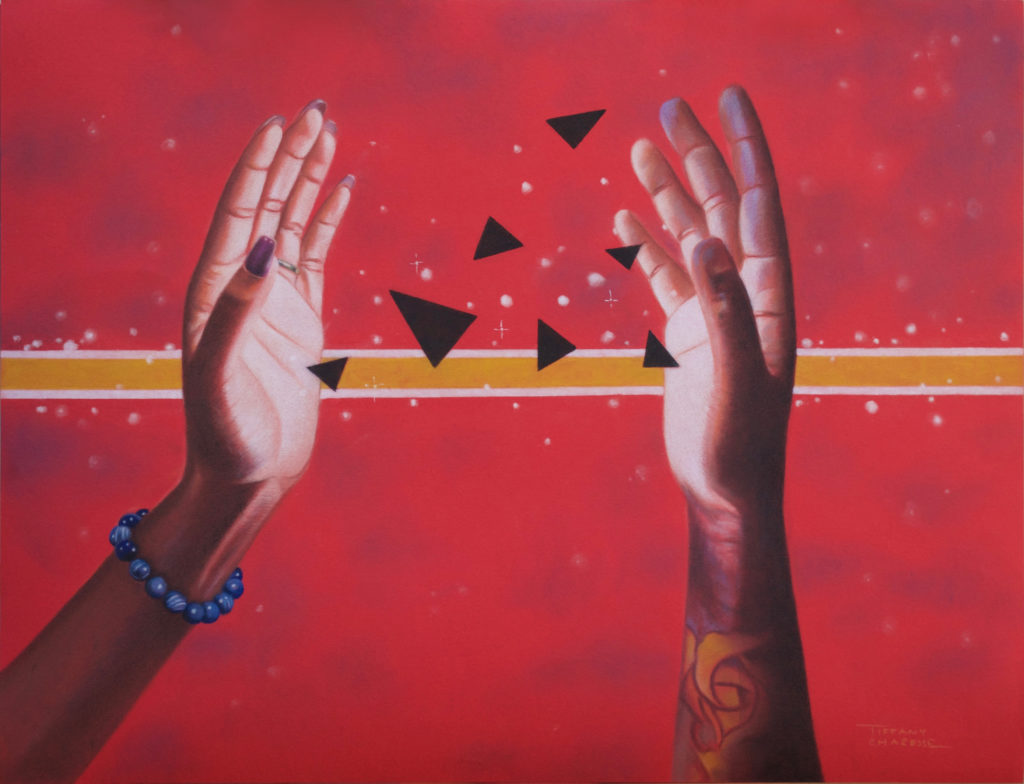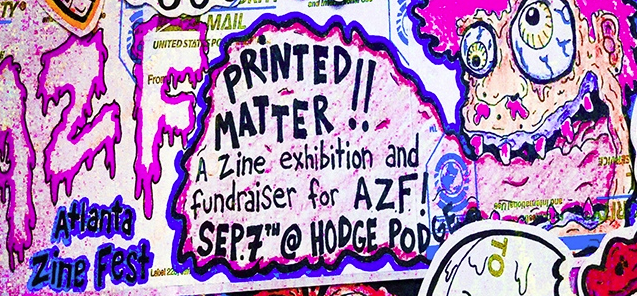When we asked Tiffany Charesse what she would be doing if she wasn’t creating art, she responded bluntly, “If I wasn’t 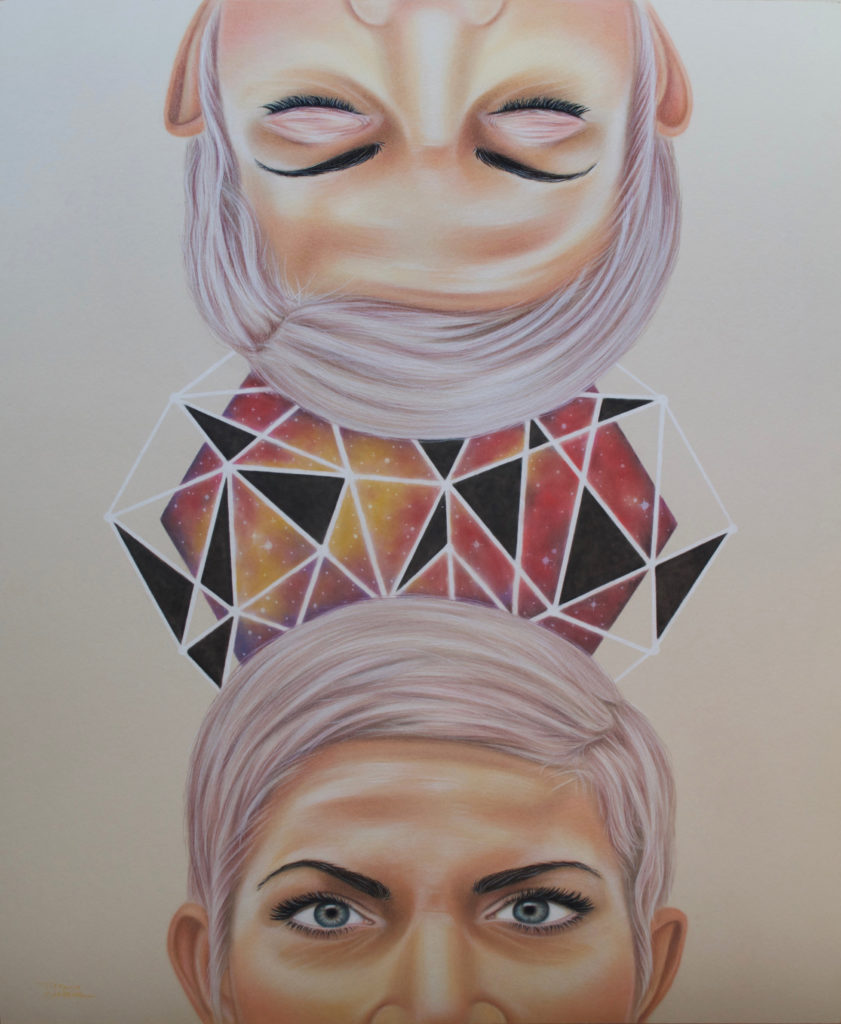 creating art, I’d be slowly wilting away.”
creating art, I’d be slowly wilting away.”
Born and raised in Atlanta, Georgia, Charesse graduated from The Art Institute with a BFA in Graphic Design in 2005. Since then, she’s experienced a successful career in the Atlanta’s art community, collaborating on gallery shows and even working with big-names brands like The Coca-Cola Company and Porsche. Featuring mostly colored pencil and pastels, her work is heavily inspired by geometric abstracting and contemporary portraiture, often blending the realism of a subject’s face with contrasted sharp lines and angled edges.
Here, Charesse talks with CommonCreativ about how she found balance and peace by jumping back into her studio, how a career in fine art found her when she wasn’t really looking, and how she uses shapes to represent how things can either be broken or pieced together, because in her own words, “it’s all in how you look at it.”
CommonCreativ: Why did you choose Atlanta as the place to start your art and design career?
Tiffany Charesse: I honestly think the career field chose me long before I was aware of it. I was always a creative who loved to draw and make things by hand, but I didn’t grow up around other creatives, so I wasn’t aware of the opportunities I could pursue in the field of art. Every little thing would catch my eye, like a logo design, a greeting card, or a label, and I would think to myself, “someone created that.” If it wasn’t for people like my high school art teacher, who submitted my work into an art competition granting scholarships to The Art Institute, I probably wouldn’t have ended up there. I honestly thought I was going to go into the dental field! I’m forever grateful for that experience because it opened my world and changed my life. I received my BFA in Graphic Design and have been working in the art and design field ever since. Atlanta has been very good to me.
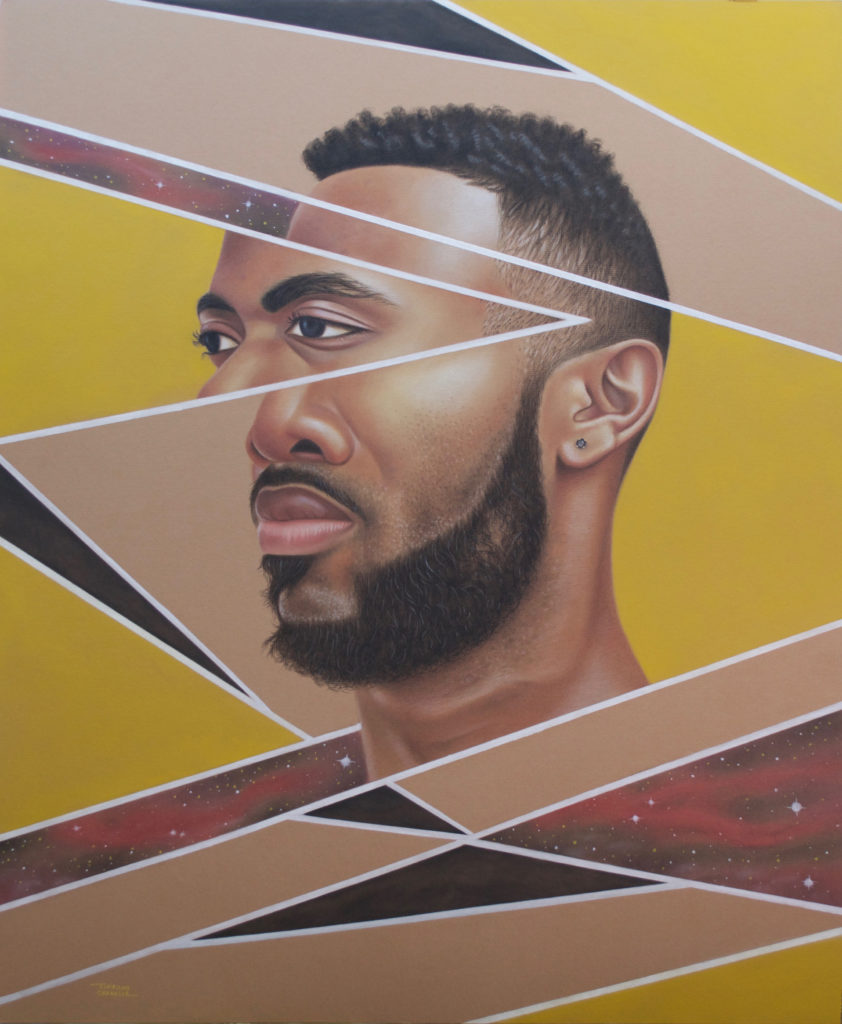 CC: How have you seen the art scene in Atlanta change from when you started to now?
CC: How have you seen the art scene in Atlanta change from when you started to now?
TC: I remember the art scene revolving heavily around the music industry back in the day. A lot of Atlanta’s record labels were using artists to design their promotional materials such as album covers and t-shirts. Artists today are shaping their own brands and starting their own companies. What I’m noticing now are a lot of public and corporate installations, which are so amazing and inspiring to see.
CC: When did you know you wanted to pursue a career in art?
TC: I’ve always been an artist, and although Graphic Design is still an art form, it’s not quite the same as fine art. I knew that I wanted to shift gears and focus on fine art after I had my daughter three years ago. Such a life-changing event like that really makes you think about what’s important to you and how you’re spending your time. I began to question whether or not I was living and shaping the life I wanted. I felt a shift in my energy and quickly realized that I wasn’t being fulfilled. I found my balance and peace by jumping back into my studio. The art I’ve been creating and the investment back into myself is the example of passion, belief, and dedication I want my daughter to always remember about her mother as she grows and pursues her own path.
CC: Your pieces often feature multiple mediums. How do you decide which mediums to use?
TC: I typically decide which medium to use based on how and where the work will be exhibited. Pastels are very delicate and require custom framing, so I usually save them for gallery exhibitions or high-end showings. Colored pencil work can be handled and framed more easily, so I may work in that medium for a quick turnaround piece or a piece that will be traveling to different shows.
CC: What subjects do you like to work with?
TC: I love portraiture and figurative work, so most of my artwork reflects that. My subjects are usually close friends and family. I find that I enjoy working on a subject more if I have a personal connection to them.
CC: What’s your process, from ideation to the actual tangible piece?
TC: I would love to say that my pieces happen organically, but that’s not the case. All of my pieces are carefully planned out; I have to have a clear vision of what I’m trying to do before I start anything. I first begin with a concept sketch and from there I’ll gather the assets I need for my piece, which may include taking photos or collecting visual inspiration. I’ll use my sketch as a guide as I develop the final piece.
CC: In one sentence, how would you summarize what you want people to take away from seeing your art?
TC: When people see my art I want them to recognize the quality of the work and feel the compassion that I have for each and every one of my subjects.
CC: What have been some of the highlights in your art career thus far?
TC: Last year was a huge coming out year for me. I was so honored to be a part of the Unravel group show at Notch8. My work was also featured in the Color ATL Volume 2 coloring book, and I ended off the year with a solo exhibition at Mason Fine Art. I want to send a special thank you to everyone who has given me a platform to share my work.
CC: What’s your process when preparing pieces and deciding on stories to share for your shows?
TC: For my Shattered But Not Broken show, I wanted the story to unfold at different levels of engagement for the viewer. I wanted my audience to enjoy a variety of technical applications while up-close and personal with the work in the gallery. For example, I used pastel for the large framed portraits, acrylic and plywood for the geometric wall installation, and a Rainbow Obsidian stone with brass wiring for the jewelry collaboration piece.
The stories of my subjects then continue on my website with personal quotes and glimpses into their personal life experiences. There’s also a short video of me working on one of my pieces for the show, as well as a step-by-step process example. My hopes are to create opportunities for discovery so that the viewer can find a connection to the work on a personal level.
CC: How do you process the country’s current political turmoil through your art?
TC: My Shattered But Not Broken series was actually derived from a very dark and negative place. I was literally sick to my stomach will all of the abuse, corruption, and injustice I was seeing on the news and on the internet. I knew that I didn’t want to create negative images to reflect my inner turmoil. Instead, I wanted to share messages of hope, self-awakening and raised consciousness. A lot of my recent works include elements of galaxies and space. I also use abstraction and geometric shapes as a representation of how things can either be pieced together or broken apart — it’s all in how you look at it.
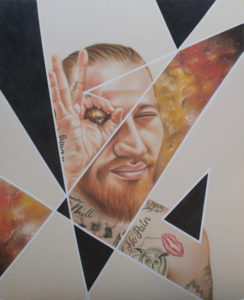 CC: What do you think of Atlanta’s art scene?
CC: What do you think of Atlanta’s art scene?
TC: I love Atlanta’s art scene and how the city is incorporating visual art as an attraction. I think it’s great that there are different creative scenes that are shaping their own movements. Lastly, I applaud the variety of galleries who support local artists and their many creative styles.
CC: Which projects are you most excited about working on next?
TC: I’m excited about showcasing work at the upcoming City of Ink Anniversary Show and Community Center Fundraiser at the end of this month. I’m also a part of a group show and creative kickback at Azjio Gallery. I’ll have pieces for sale at both events so I encourage everyone to come and check them out!
CC: What drives you to create your work?
TC: I’m driven to create because I want to leave behind something beautiful in a world that desperately needs uplifting.
See more of Tiffany’s work on her portfolio site and Instagram.

